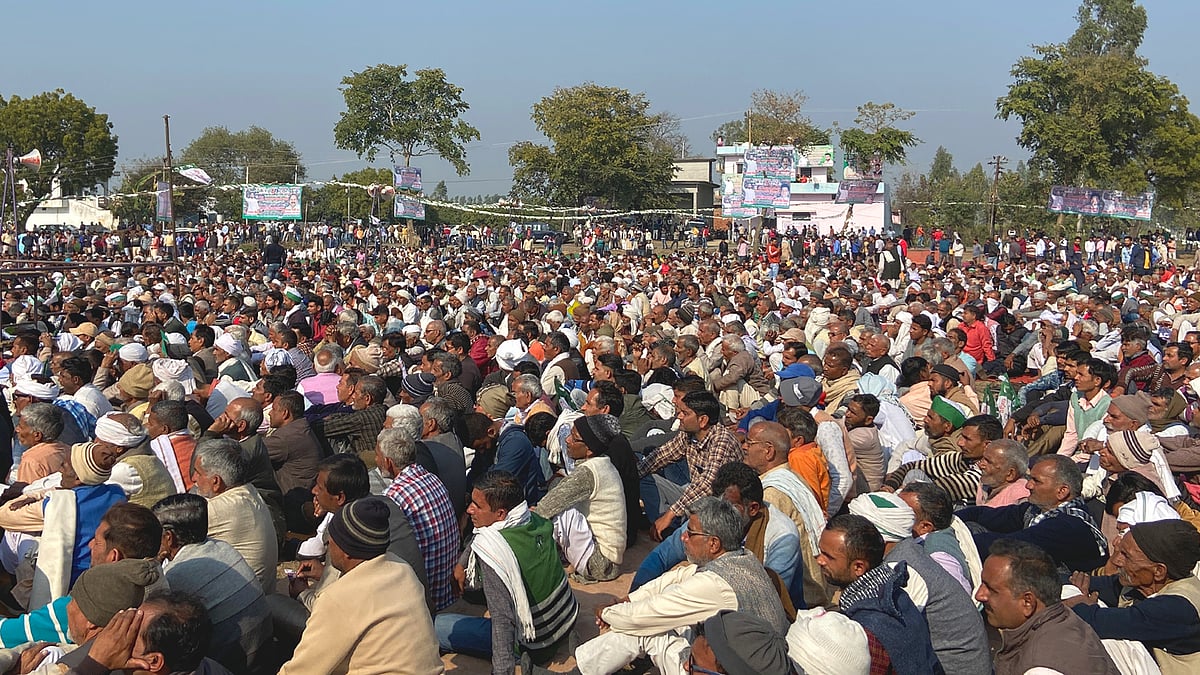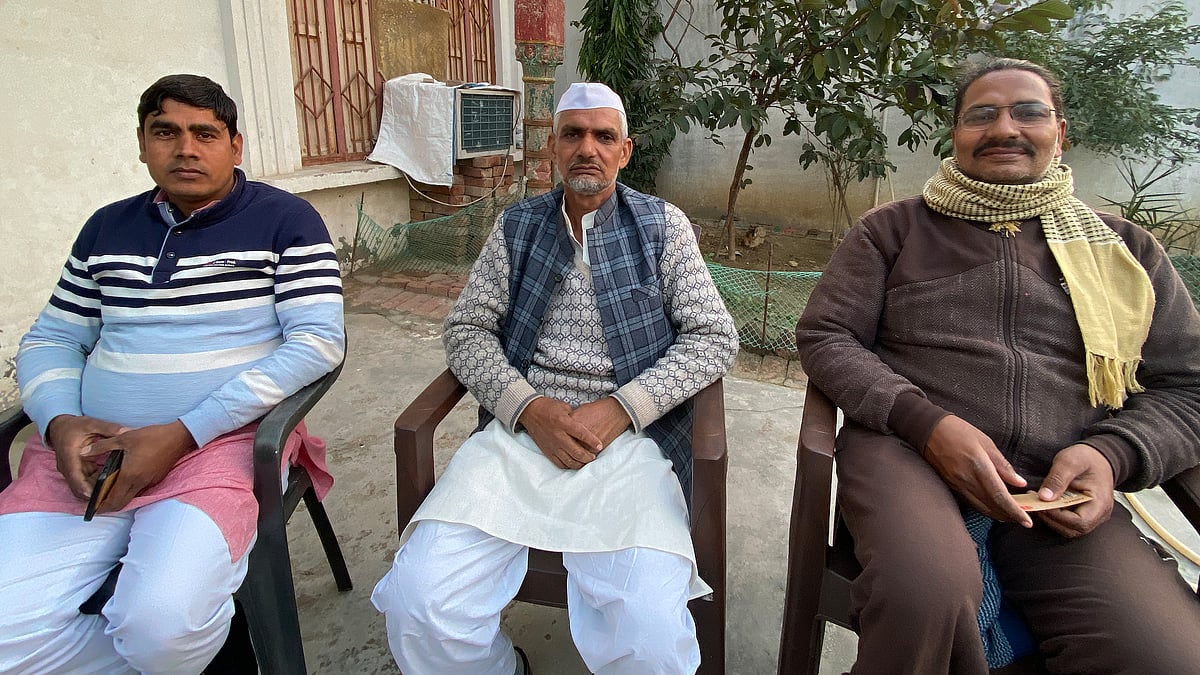In western UP swept by farmer protests, all roads lead to Sisauli
How the hometown of the Tikait brothers, their farmer union, and the khap system are running the Ghazipur protest on Delhi’s border.
For two weeks now, Vedpal Singh has been having peculiar encounters. The 65-year-old resident of Sisauli town in Uttar Pradesh’s Muzaffarnagar is stopped by people during evening walks and handed money – anywhere between Rs 10 and thousands. Vedpal is the local president of the Bharatiya Kisan Union, or BKU, which is leading the protests against the new farm laws in western Uttar Pradesh.
Sitting in the verandah of his house in the town’s northern corner, he pulled two crisp Rs 500 notes from his pocket. “I was given this on my way to here,” he grinned.
Sisauli is the powerhouse of the farmer protests in Uttar Pradesh. Situated 28 km outside Muzaffarnagar city, its residents call it a qasba – an island of urbanity in rural Muzaffarnagar that is bigger than a village but not quite a town. Sisauli is not only home to the Uttar Pradesh chapter of the BKU, founded by farmer leader Mahendra Singh Tikait in 1986, but also the head village of the Baliyan khap, a powerful clan of Jats in the region. The Tikait brothers Naresh and Rakesh, who now lead the BKU, also live here.

Since January 28, when Rakesh Tikait’s emotional outburst roused the region’s Jat farmers, the institution of khaps has underpinned the efforts to channel resources and manpower for the Ghazipur protest on Delhi’s border.
“The people here began to walk to Delhi the day Rakesh Tikait’s video came out,” a member of the town council told me. “It was a cold night. Naresh had to handle the situation and stop them.”
The Tikait brothers’ inheritance brings them formidable influence. Their father, fondly remembered as Baba Tikait, was at the forefront of farmer movements in the region for decades. He headed the BKU and was the chaudhary, or chief, of the Baliyan khap, one of the three most powerful Jat khaps in the region. After his death in 2011, Naresh assumed both the positions.

The Baliyans control dozens of villages encompassing the districts of Shamli, Meerut, Muzaffarnagar, and Baghpat. Jats in Sisauli claim the khap has hold over 84 villages, though research suggests this number had dwindled to 47 by the 1990s.
According to BKU’s Vedpal, not just Jats, but every caste group in the khap system has a chief. Sisauli is home to the chief of every caste represented in Baliyan-controlled villages, and all of them are subordinate to Naresh, whose family surname draws from ‘teeka’, or turban, purportedly bestowed upon a Baliyan ancestor by a king centuries ago.
“Naresh is considered the first among equals even among the chiefs of other khaps, be it Tomars, Maliks, Latiyans, Ranas, Dahiyas, or Rathis,” the town council member explained.

While Rakesh is the face of the farmer protest in Ghazipur, Vedpal explained, Naresh has been overseeing the groundwork from Sisauli – the money, food, transport, people, and politics of the protest.
Populated by over 15,000 people, Sisauli was once divided by a drain into two pattis, or revenue units – Chaudhran and Lepran. In the last decade, hundreds more settled in the bustling qasba and a third patti was born, called Shunyan. Once every three days, Vedpal collects food and money from each patti and sends them to Ghazipur in a truck now permanently parked in Sisauli. About 40 to 50 men from each patti also travel to the protest site in this truck or on their own tractors.
The money that Vedpal had shown me was part of this agitational project. When Vedpal is not visiting every Sisauli household to collect funds, town residents seek him out to hand over money that sustains the protest 125 km away.

“Every patti now raises Rs 10,000 to Rs 50,000 when their turn comes,” Vedpal said. “The first time we undertook this exercise in December, the town raised Rs 2.5 lakh, around ten quintals of flour, five quintals of jaggery and ten sacks of sugar for the protest.”
Of the money raised, Rs 4,000 is set aside for fuel and Rs 500 is handed to the truck driver for his meals. “He does not charge us a single rupee for renting the truck,” the town council member said. “He says that he is in the service of the chaudhary [Naresh Tikait] and cannot take money from him.”

Manju and Sunita Tikait, wives of Naresh and Rakesh, organise separate cars for women protesters who travel to the protest site less frequently than the men.
But this is only the story of Sisauli. Naresh also heads a council of thambedars, or managers, who help him control the villages under the Baliyan khap. The thambedars are responsible for managing between two and seven villages each. They are, as the town council member explained, like chief ministers governing subsets of territory under Tikait, the prime minister of the khap.
The supply of men, money and food from Baliyan villages is managed by these thambedars, who get direct orders from Tikait. The system is often rotational, and they coordinate with the chiefs of every caste group in the khap to work out the fine print of what, where, when, and how.

Moreover, about a dozen men at the Ghazipur protest constitute a “pul committee”, named after the location where it is convened – under the Delhi-Meerut Expressway. If the committee believes that the protest has a shortage of milk, sugar, tea, or any other commodity, they ring up a BKU district chief who in turn alerts a BKU worker at the block level. Within 24 hours, supplies are duly replenished.
“The mahapanchayats that are organised across western Uttar Pradesh by the BKU, be it in Baghpat, Muzaffarnagar, Moradabad or Shamli, are also the handiwork of our thambedars,” said Vedpal, adding that Sisauli’s organising method was a blueprint for other khaps – especially the Maliks and Tomars – that are keenly contributing to the agitation.
If one asks a Sisauli resident how long this decentralised system can run the protest, the answer is anywhere between several months to several years. “Our movement was at its weakest after the Republic Day violence,” the town council member told me. “But God himself intervened to revive it the day this government planned to kill it. And this is because God is always with satya, the truth, and this protest, and all of us involved in it, are on the side of satya.”
Pictures by Ayush Tiwari.
 Why Saini farmers in Uttar Pradesh aren’t supporting farmer protests
Why Saini farmers in Uttar Pradesh aren’t supporting farmer protests
 Jats in west UP say their rift with Muslims is healed. Is that even possible?
Jats in west UP say their rift with Muslims is healed. Is that even possible? Muzaffarnagar’s Muslims are still wary of Rakesh Tikait, but back Naresh Tikait
Muzaffarnagar’s Muslims are still wary of Rakesh Tikait, but back Naresh Tikait